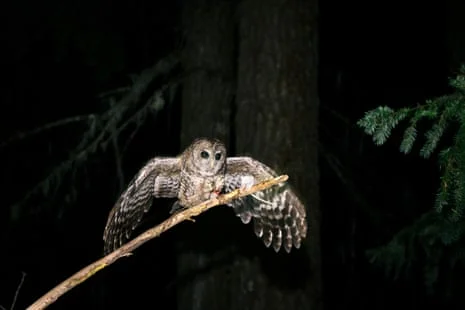
The Danger of Redefining Harm: How It Threatens Endangered Species
The Trump administration's push to redefine the term "harm" in the Endangered Species Act (ESA) is raising significant alarms among environmentalists and wildlife advocates. The implications of this action are profound, threatening to dismantle decades of hard-fought protections for the nation’s most vulnerable species.
On Wednesday, a proposal from the U.S. Fish and Wildlife Service suggested that habitat destruction should no longer be considered a harmful action towards endangered species. This landmark regulation has been a cornerstone of the ESA since its inception in 1973, aiming to protect the environments essential for the survival of imperiled wildlife. The change represents a potential catastrophe for many species whose existence hinges on their natural habitats.
Environmentalists have responded with fierce criticism. Noah Greenwald, co-director of Endangered Species at the Center for Biological Diversity, expressed deep concern, stating, "This administration’s greed and contempt for imperiled wildlife know no bounds. If approved, this rule could give a free pass to developers, loggers, and others to devastate critical habitats without any consequence." Greenwald emphasized that the overwhelming majority of endangered species are listed primarily due to habitat loss.
The proposed change to the definition of harm is not just technical; it fundamentally alters the essence of how endangered species have been protected. Historically, "harm" encompasses any action that modifies a species' habitat, thus extending protections to lands critical for their survival. By narrowing this definition to only include direct actions like hunting or trapping, the current administration undermines these critical protections, which have historically prevented industrial activities from damaging wildlife habitats.
The implications of such a shift are alarming. For instance, if the rule is enacted, actions that lead to the destruction of habitats, like logging in forests or altering rivers, would escape regulation as long as there’s no intent to directly harm the species. This could lead to increased extinction rates, particularly in areas already plagued by environmental stress due to industrial activity.
Adding to the urgency is the historical context; previous Supreme Court rulings have upheld the broader interpretation of harm that includes habitat destruction. As Drew Caputo from Earthjustice argues, the proposed rule poses the “most significant setback” to the ESA to date. "By saying that habitat modification isn’t harm, you cut the heart out of the Endangered Species Act," he stated.
The public will have 30 days to respond to this proposal, and environmental groups are preparing to challenge it in court if it gets finalized. As debates surrounding habitat protections intensify, many conservationists fear that this regulatory shift could accelerate the extinction crisis faced by so many species, particularly in biodiversity hotspots like Hawaii and other vulnerable ecosystems.
What remains at stake is not only the survival of individual species but also the intricate web of life that supports these ecosystems. Without robust protections, the fate of many animals hangs in the balance, reminding us of the urgent need for action in defense of our planet's biodiversity.
As the comment period opens, one must ponder: What kind of legacy do we wish to leave for future generations? Is dismantling critical habitat protections the right path forward? Share your thoughts in the comments below.